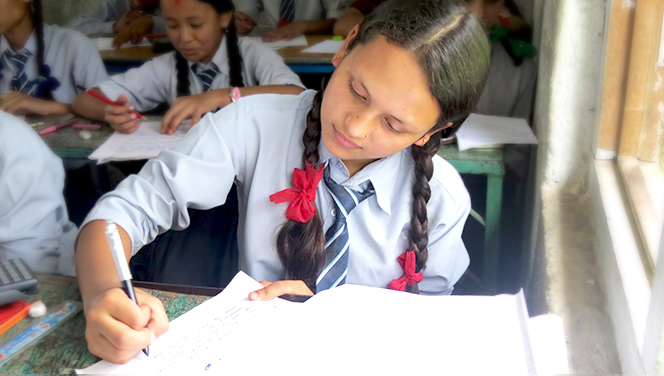
Just like in the United States of America, this was an election year in Mongolia. In June of this year, Mongolia had an election for the Parliament. This event was critical in expanding political participation by Mongolian women because for the first time in the Mongolian election laws a 20% quota for female candidates was introduced. As a result of this historica law 9 women were elected as members of the Parliament (MP). Having only 12% of the total seats occupied by women (9 out of 76 seats) might not seem so impressive, but after this past election, the number of female MPs tripled from 3 in the previous Parliament. Furthermore, 3 of these MPs were appointed as Ministers of the recently formed Government. The 9 female MPs belong to 4 different political parties so they are not all alike, but they have formed a Women’s Caucus and are working together across party lines to advance gender issues in the political sphere. In early August, the Women’s Caucus organized a consultative meeting to draw attention to the need for improvement in the quality of the maternity hospitals in the country. Other meetings have also been held to discuss a national mechanism for gender equality.

Back in Nepal, elections are a big part of an ongoing political chaos. However, in terms of women’s political participation, Nepal actually set a good example, not only for Mongolia but also for the rest of the world, when they elected Constitutional Assembly (CA) members in 2008. Out of 594 CA members[1], 197 (or 33.2%) were women. This ranks Nepal in the 20th position in the world in terms of female political participation, according to the Inter-Parliamentary Union (http://www.ipu.org/wmn-e/classif.htm). The interim Constitution of 2007 placed an emphasis on social inclusiveness, and hence, the distribution of the political seats was carefully designed to represent as diverse of a constituency as possible in terms of gender, caste and ethnicity.
Despite this remarkable achievement, there was criticism that the numbers do not ensure quality of political participation. Negative references were made especially for the background of female MPs: some of them had only limited education and literacy, and their political experiences and knowledge were also seen as insufficient.
Nepal ranked 20th in the world in terms of political participation by women as a result of the Constitutional Assembly of 2008.
Nonetheless, some female MPs in Nepal have proved that education and political experience are not essential prerequisite for meaningful political participation. If motivated and committed to improving the lives of their constituency, qualities like education can be addressed later and political experience comes from active participation. For instance, Shanta Chaudhary was illiterate when she was elected as a CA member in 2008 because she had been sold into slavery at the age of 8 and spent her whole childhood and adolescence by working for 19 hours a day instead of being in a school. She was selected as a CA member because of her campaign on land rights for disenfranchised people. After becoming a CA member, she has now learned to read and write and has successfully fulfilled her responsibility as a political leader.
Read more about Shanta’s story here: (http://india.nydailynews.com/newsarticle/4ffaf0e4c3d4ca935e000009/nepal-s-kamlari-girls-break-the-bonds-of-slavery).
What Shanta’s story suggests is that if given an opportunity, women and girls can be as capable as men and boys in any field, including politics; which is generally regarded as a “man’s place” in most of the world. While women and girls may not seem to have the adequate skills and experience, as long as they are willing to learn, adapt and grow, there is a huge potential for transformation and empowerment. Women and girls should not be discouraged from pursuing politics on the ground of socially-assigned appropriateness and a perceived insufficient capacity. The process of stepping into a new field is very challenging, but equipped with the right skills and motivation along with a sense of confidence, there is tremendous potential for women in places like Mongolia and Nepal to change the political landscape. While I have taken politics as an example of such process in this post, this is equally applicable to other areas. In the case of Samjhana, one of the Rukmini scholars, playing a sport like cricket, which is considered a game for men and boys, could also be transformative process.
Shanta Chaudhary was essentially a slave before she was selected as a member of the Constitutional Assembly due to her campaigns for land rights. Despite being illiterate, her strength of character and dedication to her constituency made her a successful politician.
While there are signs of hope, there have been some major setbacks, especially in Nepal, where warring political factions failed to reach an agreement to meet the deadline for establishing a new Constitution by 27 May 2012. The CA was dissolved, and another election for a new CA was announced — but the date has not been decided yet. I really hope that despite twists and turns in the political course, Nepal will at least continue to ensure women’s place in the House, and not force them to go back to their homes as housewives, maids, or indentured servants. The positive strides have to be capitalized on in order to make the political arena more gender-sensitive and socially-inclusive.
[1] Figures correspond to the number of seats currently filled in Parliament. The total number of the seats was originally 601.
- FGM is violence against girls and women - February 11, 2016
- A Woman’s Place is in the House … Parliament that is - November 22, 2012
- Himalaya and Steppe: Lessons on Girls’ Education from Mongolia - July 21, 2012

